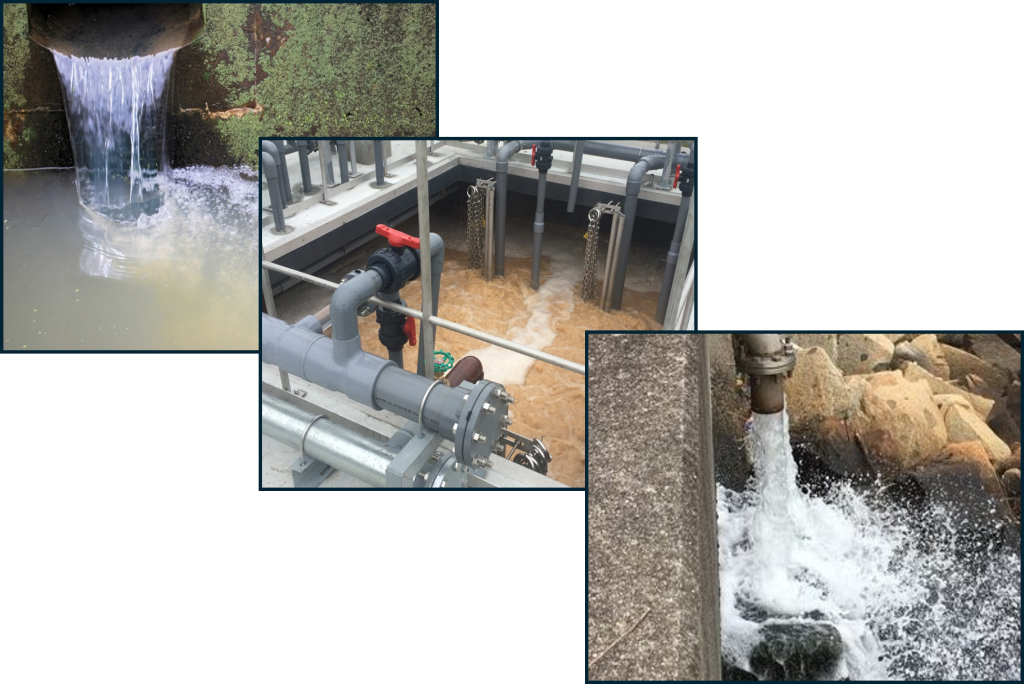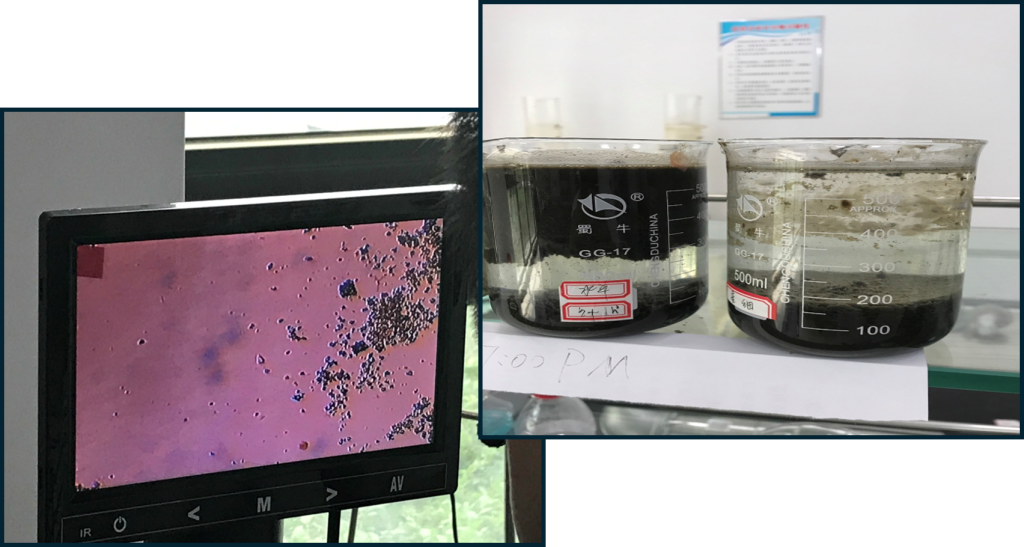
Water quality deterioration, a global issue, is exacerbated by industrialization, discharge of industrial wastewater, and population growth, among other factors. We conduct water quality surveys and propose solutions, carrying out the necessary work for improving water quality through local businesses.
When sewage from factories and commercial facilities flows into rivers and ponds/lakes, it causes destruction of aquatic ecosystems. It also flows into groundwater, causing human health hazards and land subsidence. Our water quality improvement is nature-friendly, limiting environmental impact to a minimum and returning the water to its original ecosystem. For example, our device that generates powerful invisible microscopic bubbles improves the oxygen content in the water, increases the activity of bacteria, and allows the bacteria to purify pollutants in the water, and has been installed in many Asian countries.
Microbubble Generator
Microbubbles improve the oxygen content of water by injecting minute bubbles into the water. Large bubbles (like those created by a water wheel, etc.) do not stay in the water and do not bounce on the surface of the water, but remain in the water for an extended period of time.

Sewage Treatment by Bacteria
A mixture of naturally occurring bacteria produced by a special process is used to decompose and treat sewage even more powerfully. The bacteria can stay in the water and are effective not only in stagnant water areas but also in rivers. The bacteria do not affect existing ecosystems and can coexist with existing organisms. The bacteria reproduce tens of millions of times in 24 hours and are active in the water. It is an effective bacterium for sewage treatment.
Water purification system using natural minerals
This method uses locally available minerals and a special formula to quickly eliminate deteriorated or muddy water quality. Since all materials are locally sourced, there is no change to the environment. This method is particularly effective in rivers and water bodies, as no chemicals are used. The water purification method involves setting up a water wheel in a river, lake, or pond and adding an appropriate amount of the solution. Sedimented impurities are dredged or left as they are, which helps the growth of bacteria.